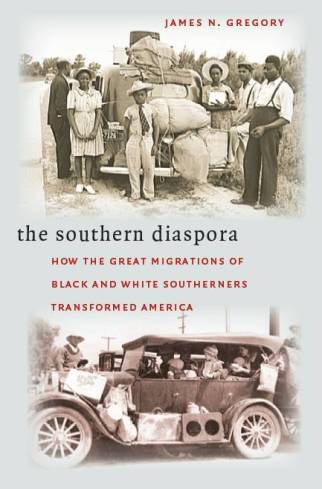|
Much
like the way that the Blues, R&B, Soul, and Hip-hop have served as expressive
vehicles for African Americans, Hillbilly and Country music have spoken for
white southerners and spoken to them, modeling behaviors and understandings that
have helped in the refashioning of southern white culture and identities. And
there is another parallel. A diaspora story lurks deep in the heart of country
music.
She
was born a coal miner’s daughter in a one room cabin in Butcher Hollow Kentucky
in 1935 and if anyone represents the idealized image of country music as a
product of the white working class South, it is Loretta Lynn, the straight
talking, unpretentious queen of Nashville whose life (married at 13, four kids
by 18) and lyrics (“Don’t Come Home A-Drinkin’ With Lovin’ On Your Mind”) have
made her since the 1960s an industry icon. But Loretta Lynn could also serve as
a symbol of the white diaspora and of the complicated geography of country
music. For while it is true that the South is the fertile crescent, it is also
true that country music, like jazz, depended very much on the circulations of
southerners outside the home region.
Loretta Lynn’s country music career began not in Kentucky or
Tennessee but two thousand miles away in a logging town hard up against the
Canadian border near Bellingham in Washington State…
Country music historians typically stress the music's close
connection to the culture of the rural and working class white South, and while
acknowledging the importance of New York record companies and other commercial
structures, they are happiest telling the story of Jimmie Rodgers, the Carter
family, Roy Acuff, and other great musicians who reshaped the sounds and styles
of country music while remaining in the South. But the industrial geography of
commercial music gave special advantages to those performers, like Dalhart and
Kincaid, who made their careers outside of the South, just as it did for
diaspora blues musicians like Bessie Smith and Louis Armstrong. And while it
would be a mistake to claim that most of the innovations occurred outside the
South, it is true that some of the most important changes originated on what we
might call the "frontier of country music," the northern and western cities
where the genre fought for recognition and expanded audiences.
excerpts from Ch
5
"Uptown and Beyond" |

The
Southern Diaspora: How The Great Migrations of Black and White Southerners
Transformed America
is the first historical study of the Southern Diaspora in its entirety. Between
1900 and the 1970s, twenty million southerners migrated north and west. Weaving
together for the first time the histories of these black and white migrants,
James Gregory traces their paths and experiences in a comprehensive new study
that demonstrates how this regional diaspora reshaped America by "southernizing"
communities and transforming important cultural and political institutions.
Read
the catalogue description
and advance reviews.
Read the
Preface and Introduction.
|